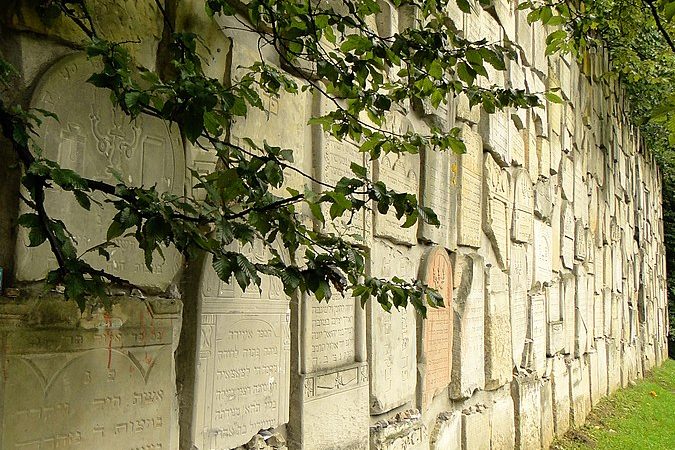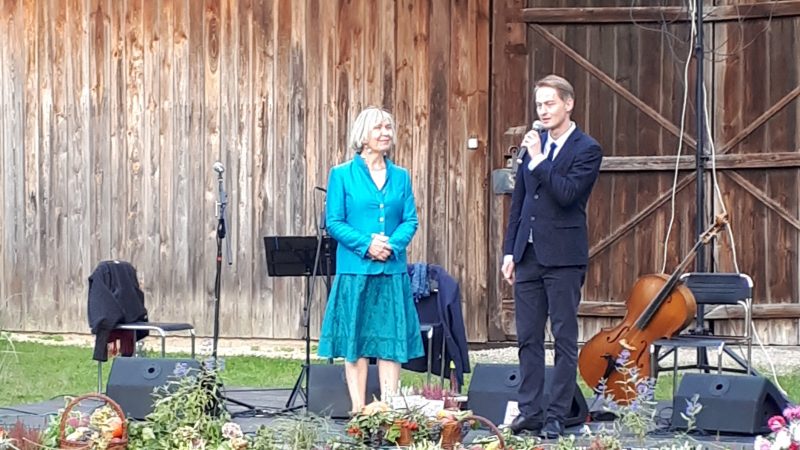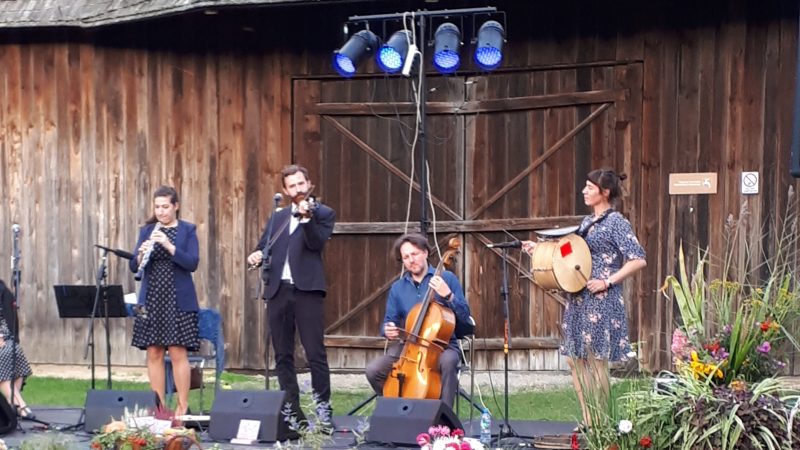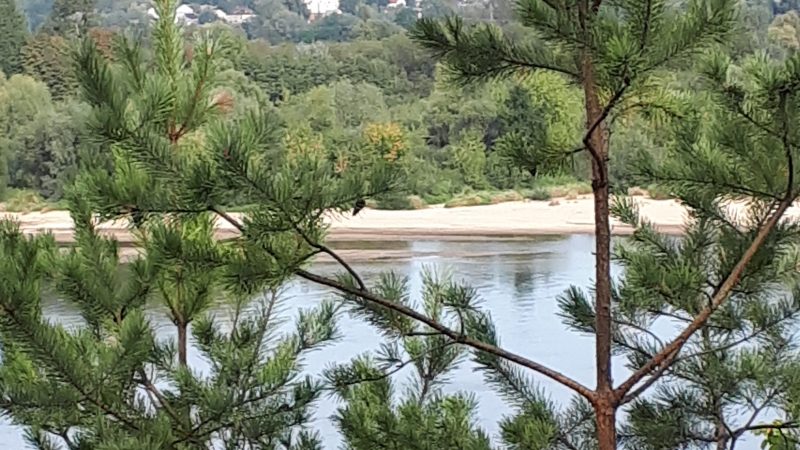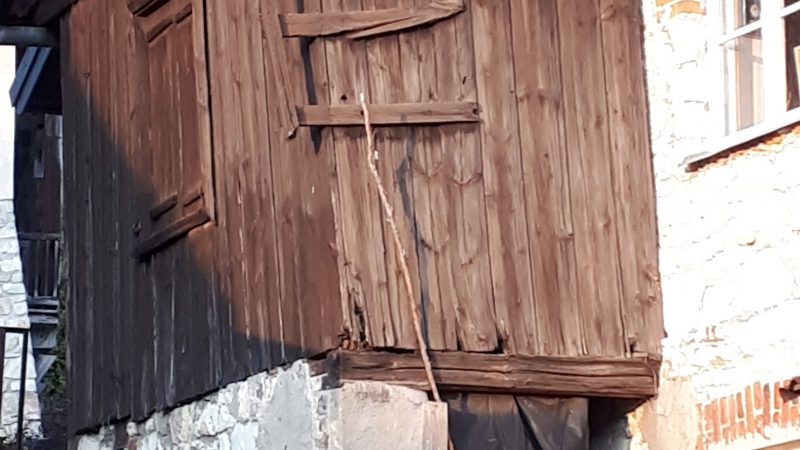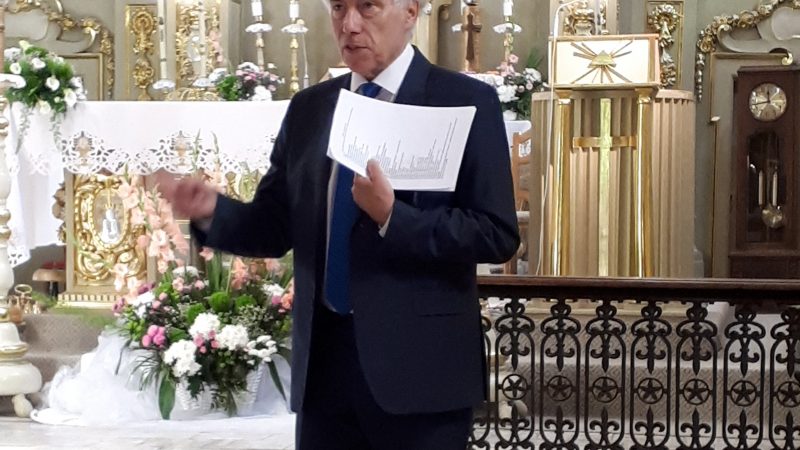Kazimierz used to be the most Jewish town in Poland
Sunday was the final day of the 8th Pardes Festival – Meetings with Jewish Culture, which took place in Kazimierz Dolny and Janowiec
23 September 2020
Kazimierz was once regarded the most distinctly Jewish town in Poland. This belief was further strengthened by the Jewish artists coming to Kazimierz, which they referred to as “Kuzmir.” Among them were such painters as Maurycy Trębacz, Józef Gabowicz, Abraham Neuman, Maurycy Minkowski, Szymon Kratka, Feliks Rubinlicht, Abraham Ostrzega, Józef Seidenbeutel, Leon Lewkowicz, Władysław Weintraub, Chaim Hanft, Maksymilian Eljowicz, Henryk Lewensztadt, Józef Śliwniak, Natan Korzeń, Henryk Rabinowicz, Samuel Finkelstein, Ignacy Hirszfang, Tadeusz Trębacz, Natan Szpigel, Symcha Trachter, Efraim and Menasze Seidenbeutel, Mira Zylowa, Henryk Cytryn, Izrael Tykociński, Samuel Cygler, Gizela Hufnaglówna-Klimaszewska, and many others. Both Szmul Wodnicki and Chaim Goldberg were born here.
Kazimierz primarily owes its literary legend of an “ideal shtetl” to Szalom Asz, who immortalised the town in his novel titled “A shtetl.” Zusman Segałowicz was proclaimed the “bard of Kazimierz.” Lejb Raszkin (Szaul Fridman), Jaakow Gladstein, Jechiel Jeszaja Trunk, Mordechaj Canin and Szmul Lejb Sznajderman – to whom the Vistula in Kazimierz spoke in Yiddish – all wrote about Kazimierz.
Asz wrote: “What of the Jordan? Vistula is my river. For 600 years, my ancestors’ candles had been reflecting in the Vistula every Sabbath.”
Indeed, Kazimierz used to be the most Jewish town in Poland. It used to be.
Not much remains of the Jewish heritage of Kazimierz. An old synagogue, butcheries (“jatki”), a wooden balcony installed on one of the houses – a sukkah for the Sukkot, a plaque commemorating the old cemetery, a monument on the new cemetery built from destroyed matzevas, as well as about a dozen stone tombstones erected by the Polish inhabitants during the post-war clean-up of the area.
There are no Jews in Kazimierz anymore. Nonetheless, Dr Aleksandra Markiewicz is doing her best to preserve their memory. Thanks to her efforts, the Jewish culture festival took place in Kazimierz for the eighth time already. Just like the last year, the festival encompassed both sides of the Vistula at once – Kazimierz and Janowiec.
The festival’s programme included an opening speech on the concept of “Pardes,” a part of the Jewish tradition, given by Piotr Kowalik from the POLIN Museum of the History of Polish Jews, a lecture on the history of the Janowiec church by professor Wiktor Łojak, during which the professor gave an organ concert and played the works of such artists as Louis Lewandowski, concerts of the Tango Attak and Ola Avigail bands, which perform songs written by Jewish composers in Yiddish, and the Niwiński band, featuring the soloist Mariza Nawrocka, also singing in Yiddish.
Themed walks have already become one of the festival’s traditions. Due to the pandemic, there were exceptionally many of them this year; the routes available included the traces of Jewish culture in Kazimierz and vineyard farming in Janowiec, as well as the gardens, orchards and ravines near the “Pod Wiewiórką” villa.
One of the walks, as well as a presentation by Bohdan Lisowski, the President of the Association of Polish Architects, was devoted to Karol Siciński – the initiator of the post-war reconstruction of Kazimierz (including the synagogue and butcheries). The meeting with Karolina Prewęcka, author of the biography of the Jewish painter Mela Muter, and Mariza Nawrocka – an expert on the artist’s work – was of particular interest as well.
Joanna Zętar from “The Grodzka Gate – NN Theatre” Centre talked about the “Grodzka Gate” building in Lublin – a border between two worlds – Polish and Jewish.
Two presentations, which took place at the festival, i.e. “Pictures from the past: the History of the Jewish Kraśnik” (by Mariusz Bieniek) and “Memory carved in stone: Jewish cemeteries in Kraśnik” (by Magdalena Pulikowska), are indicative of the direction in which the festival is going to develop in the future.
The festival’s organiser was the Spichlerz Kultury Foundation and its partners included the Nadwiślańskie Museum in Kazimierz Dolny.
Dr Halina Postek, Head of Education at WGM
Photo: The Synagogue in Kazimierz (WGM)


